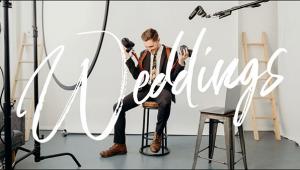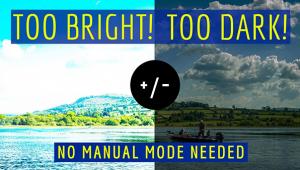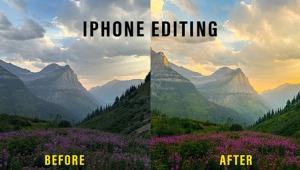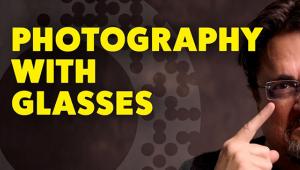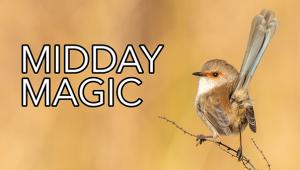The Director: How Scott Robert Lim Gets to the Emotional Heart of Wedding Photography

All Photos © Scott Robert Lim
Scott Robert Lim tends to cut to the chase.
“Everything you see in my photographs is deliberate and intentional,” he says. “I’m out to capture beauty—beauty satisfies, beauty sells.”
So while many wedding photographers react to a situation to capture the beauty they might see, Scott Robert, as he’s known in the industry, feels that as a photographer who’s charging $10,000 or more, he’s got to knock it out of the park every single time, no matter what. So he became a director of brides, grooms, and situations.
“I figured out it’s much faster and more efficient for me to direct the situation, kind of how a movie director would, in order to create an image of the most beautiful aspect of the moment.”
Every photo says what he wants it to say. “There has to be a strong voice coming from each photo. The Eiffel Tower might happen to be in the background, but that’s not the story of the photo. I’m always thinking, Here’s the place; now create and set the story. And it has to happen within a minute or two—wedding photography is very fast.”
He’s hired for his style, vision, and storytelling ability. “I tell the couple I’m going to edit the take down to the top 100 to 150 photos that I think should go into their album to tell the story of the day. But it’s my vision of the day, how I feel their day went. In the end, they see my highlight reel.”
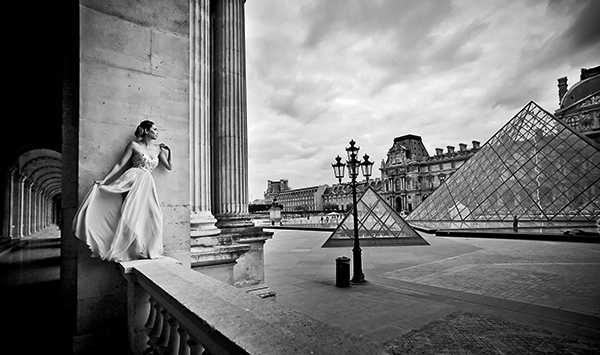


An Editor’s Eye
It took some 16 years of wedding photography experience to turn Scott Robert from a beginner to a confident, fearless shooter. “When you first do wedding photography, you’re like a mad person, out there shooting everything,” he says. After a while, though, you start to discern the shots that work—and why they do. Then, if you really want to take control, you learn to edit your own work, right there, on the spot, on the fly.
“So I take a shot,” Scott Robert explains, “and I like it. And then I’m looking through the viewfinder at the next shot I’m going to take, and I think, Is this photo going to be any better than the photo I just took? And if I decide it isn’t, I don’t shoot it. That scene in front of me—I decide that they’re not going to want it, that it won’t make the album. It’s average, so why take it?”
Then he takes an additional step. “I’ll actually delete photos in my camera as I go. If I don’t like it, I delete it. Because what if I show it to my clients, and they choose it over a more artful photo, one that I like? I don’t want to give them the option of choosing something I don’t really believe in. The picture has to be up to my standards.”



Shortcuts
About six years into his wedding career, Scott Robert began to teach. At first it was a part-time thing. “I wanted to pass along what I’d learned,” he says, “and to provide shortcuts to all the things I wish I’d known from the beginning.”
He loved teaching, but there was a problem: he didn’t want to create competition, but he also didn’t want to hold back on anything he knew. Teaching eventually won out, and these days he shoots only about a half-dozen weddings each year, mostly for friends, students, or friends of students.
While he can pass along in his workshops the ideas, methods, and techniques that work for him, there’s still the matter of his standards. Standards are probably not teachable, but there’s always the inspiration of that highlight reel.

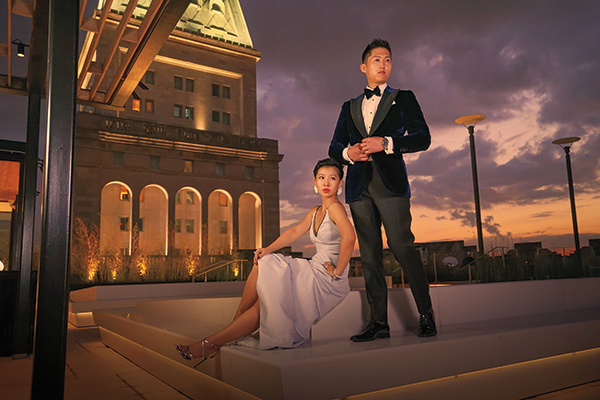
Scott Robert’s Gear
Scott Robert is a Sony Artisan of Imagery and shoots with an A7R II and an A7 II, one fitted with an FE 85mm f/1.4 GM lens, the other with an FE 16-35mm f/4 ZA OSS lens.
“With that two-camera, two-lens setup, I can shoot two different shots of the bride and groom immediately,” he says. “And I shoot those cameras in live view, so I’m seeing the exposure before the picture is taken—it’s a tremendous advantage given the variety of settings and lighting conditions a wedding photographer faces.”
His lights are his own creation—a strobe, the Strobie 230, and a video light, the SRs Killer Video Light 300.
Why his own lights? “Simplicity,” he says.
“A lot of the flashes are too complicated—too many features, too many choices, too much menu scrolling. I want light that I can control quickly and manually. My lights are basic and simple, and I can show an assistant how to use them in 30 seconds or less. They have only the features I need to create my imagery.”
Everything Scott Robert—images, equipment, workshops, news, notes, blog entries, and more—can be found at scottrobertphotography.com.
